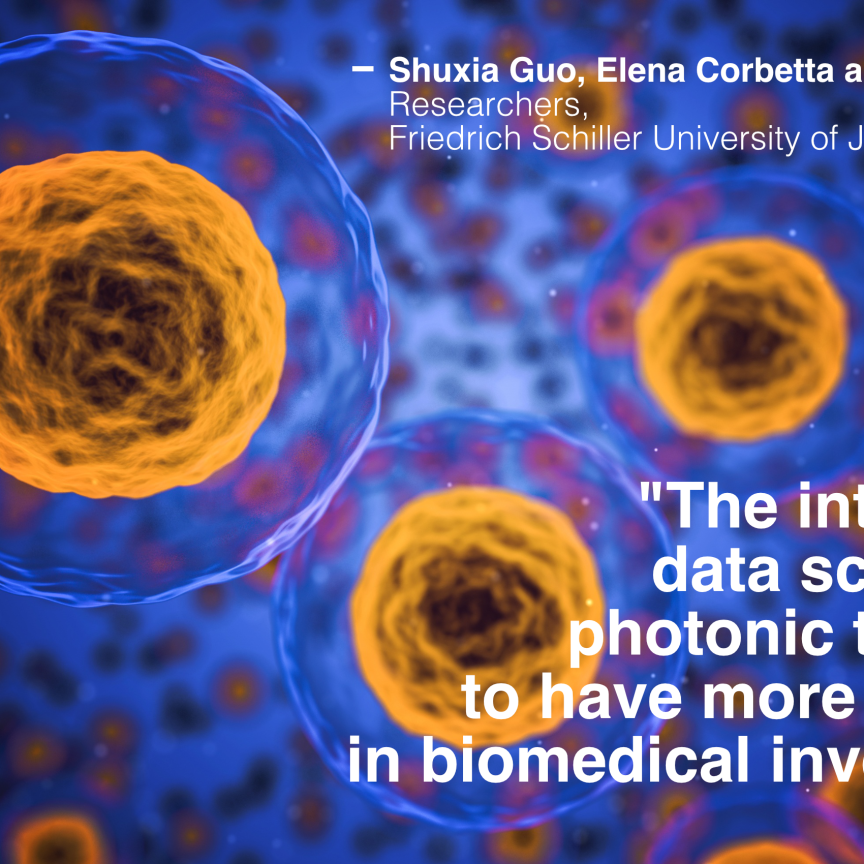Tissue identification is a crucial part of any medical process. Disease diagnosis, making surgical decisions, and treatment plans – all of these steps benefit from advanced tissue identification techniques
In conventional medical diagnostics, the tissue identification procedure typically involves obtaining a biopsy sample from the patient, followed by meticulous analysis, often utilising microscopy techniques within a laboratory setting. While histopathology is often regarded as the “gold standard” for cancer diagnosis,1 it is not without limitations. The invasive nature of biopsy sampling poses discomfort for patients, the precision of the sampling process impacts diagnostic accuracy,2 and the urgency of clinical decision-making necessitates efficient procedures for optimal patient outcomes.3 This article will explore the challenges posed by traditional tissue identification methods and identify emerging technologies and approaches that promise to revolutionise this critical aspect of medical practice.
Added value of spectroscopy in tissue identification
Spectroscopic techniques are already used in laboratory and clinical settings for successfully diagnosing cancers and tissue discrimination.4-7 What makes spectroscopic tissue analysis so invaluable is the chemical information the spectroscopic technique can retrieve. Unlike relying on visual cues in imaging microscopy, spectroscopic methods capitalise on detecting specific chemical biomarkers present in tissues. This nuanced approach also further enhances the accuracy of tissue identification and characterisation.5
One of the key advantages of using spectroscopic methods, particularly with longer wavelength radiation, is that the radiation has an improved penetration depth and can be used to visualise tissue structures inside the body without the need for surgery. This way, vital information regarding the location, depth, and composition of tissue structures can be obtained, all while ensuring minimal discomfort to the patient.
Real-time diagnostics
In addition to bolstering diagnostic precision, cutting-edge spectrometers like the Avantes series can provide real-time imaging information even during a surgical process.
The Avantes AvaSpect-ULS028XL-EVO or HS208XL, when paired with an Avantes light source or combined with fibre optic probes, proves instrumental in distinguishing between human tissue and prosthetics. Leveraging the advantages of both reflectance and transmission modes, these instruments enable surgeons to discern subtle variations in tissue composition, aiding in surgery navigation and ensuring optimal patient outcomes.
Specific applications of spectrometers
Spectrometers play a pivotal role in various medical diagnostic applications, showcasing their versatility and precision, some of which are outlined below:
Smart biopsy for oncological precision
Spectrometers introduce the concept of the “smart biopsy,” leveraging real-time analysis capabilities to address challenges in oncology, particularly in ensuring complete tumour removal.8 By integrating spectroscopic capabilities into surgical tools, such as the surgical knife, surgeons gain access to a “smart” tool capable of discriminating between tissue types in real-time through reflectance measurements. This advancement enhances the precision of biopsies and mitigates the risk of missing cancerous regions.
Enhancing precision in anaesthesia delivery
The high spatial resolution of spectroscopic techniques extends beyond biopsy procedures to other high-precision interventions, including anaesthesia delivery.9 Incorporating fibre optics and spectroscopy into the needle tip revolutionises anaesthesia administration, particularly regional anaesthesia. By discriminating nerve tissue from its surroundings in real-time, spectrometer-equipped needles ensure accurate and effective nerve blocks, minimising the risk of nerve damage and enhancing patient safety.9
Accurate depth determination for targeted treatments
Spectroscopic information can also provide accurate depth determination, crucial for various medical interventions. Depth information proves invaluable in locating tissues like nerves and optimising treatment doses, as exemplified in radiotherapy. By precisely determining tissue depth, spectrometers contribute to dose minimization strategies, reducing unwanted side effects and improving patient outcomes.10
Future frontiers in tissue identification
Integrating spectroscopic techniques into tissue identification has already revolutionised the quality of medical information available to clinicians, leading to improved diagnosis times and the acquisition of novel insights during surgical procedures. Spectroscopic methods offer the advantage of non-invasiveness, mitigating clinical risks associated with traditional diagnostic procedures. As a result, invasive surgical biopsies may soon be replaced by minimally invasive techniques similar to pulse oximetry.
The development of compact, hand-held spectrometers also opens many possibilities for point-of-care diagnostics, extending the reach of advanced diagnosis beyond traditional medical settings. These portable devices offer real-time insights and non-invasive characterization, paving the way for enhanced precision in diagnostics and treatment guidance.
At Avantes, our mission is to promote the transformative potential of spectroscopy. Our technology empowers clinicians and researchers alike to achieve unprecedented levels of diagnostic yield, guiding treatments and ultimately improving patient outcomes.
Contact Avantes today to explore how our extensive range of spectrometers can revolutionise your approach to tissue discrimination, whether in a clinical setting or a research laboratory. Join us in shaping the future of medical diagnostics and patient care.
References
- Irshad, H., Member, S., Veillard, A., Roux, L., & Racoceanu, D. (2014). Methods for Nuclei Detection , Segmentation , and Classification in Digital Histopathology : A Review — Current Status and Future Potential. IEEE Reviews in Biomedical Engineering, 7, 97–114. https://doi.org/10.1109/RBME.2013.2295804
- Neal, R. D. (2009). Do diagnostic delays in cancer matter ? British Journal of Cancer, 101, 9-1S2. https://doi.org/10.1038/sj.bjc.6605384
- Pritzker, K. P. H., & Nieminen, H. J. (2019). Needle Biopsy Adequacy in the Era of Precision Medicine and Value-Based Health Care. Arch Pathol Lab Med, 143, 1399–1415. https://doi.org/10.5858/arpa.2018-0463-RA
- Blondel, W., & Delconte, A. (2021). Diffuse Reflectance Spectroscopy : SpectroLive Medical Device for Skin In Vivo Optical Biopsy. Electronics, 10, 243.
- Santos, I. P., Barroso, E. M., Schut, C. B., Caspers, P. J., Lanschot, C. G. F. Van, Choi, D., & Kamp, M. F. Van Der. (2017). Raman spectroscopy for cancer detection and cancer surgery guidance : translation to the clinics. Analyst, 142, 3025–3047. https://doi.org/10.1039/c7an00957g
- Amani, M., Bavali, A., & Parvin, P. (2022). Optical characterization of the liver tissue affected by fibrolamellar hepatocellular carcinoma based on internal filters of laser ‑ induced fluorescence. Scientific Reports, 1–10. https://doi.org/10.1038/s41598-022-10146-7
- Hendriks, B. H. W., Balthasar, A. J. R., Lucassen, G. W., Voort, M. Van Der, Kortsmit, J., Langhout, G. C., & Geffen, G. J. Van. (2015). Nerve detection with optical spectroscopy for regional anesthesia procedures. Journal of Translational Medicine, 1–11. https://doi.org/10.1186/s12967-015-0739-y
- Amiri, S. A., Dankelman, J., & Hendriks, B. H. W. (2024). Enhancing Intraoperative Tissue Identification : Investigating a Smart Electrosurgical Knife ’ s Functionality During Electrosurgery. IEEE Transactions on Biomedical Engineering, PP, 1–12. https://doi.org/10.1109/TBME.2024.3362235
- Hendriks, B. H. W., Balthasar, A. J. R., Lucassen, G. W., Voort, M. Van Der, Kortsmit, J., Langhout, G. C., & Geffen, G. J. Van. (2015). Nerve detection with optical spectroscopy for regional anesthesia procedures. Journal of Translational Medicine, 1–11. https://doi.org/10.1186/s12967-015-0739-y
- Naumann, P., Batista, V., Farnia, B., & Fischer, J. (2020). Feasibility of Optical Surface-Guidance for Position Verification and Monitoring of Stereotactic Body Radiotherapy in. Frontiers in Oncology, 10, 573279. https://doi.org/10.3389/fonc.2020.573279
Further information
For more information about Avantes’ extensive range of spectrometers for medical applications visit the company's website.


